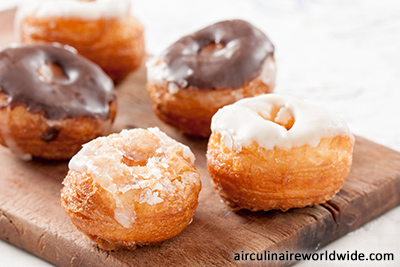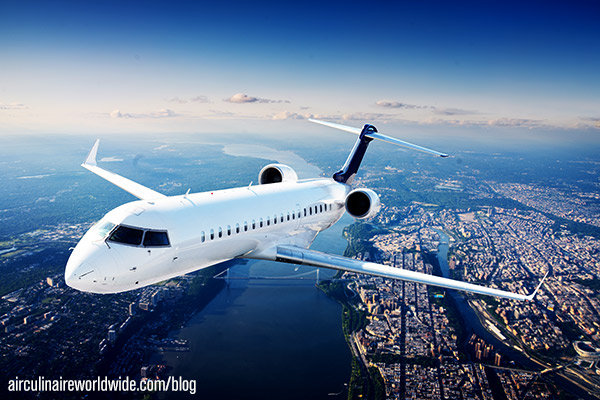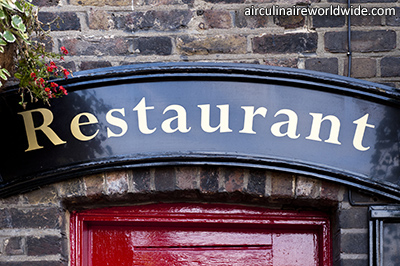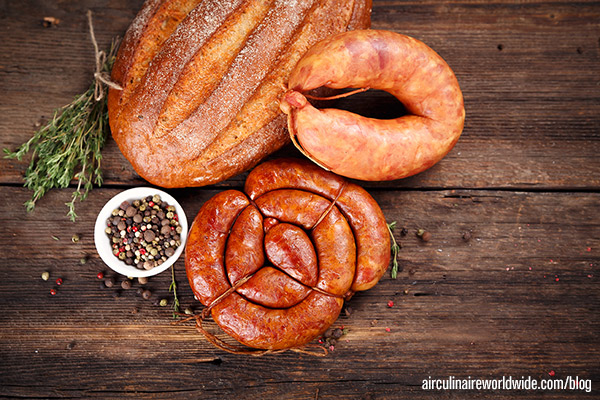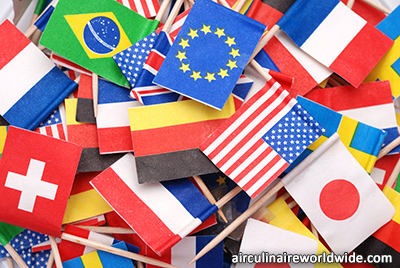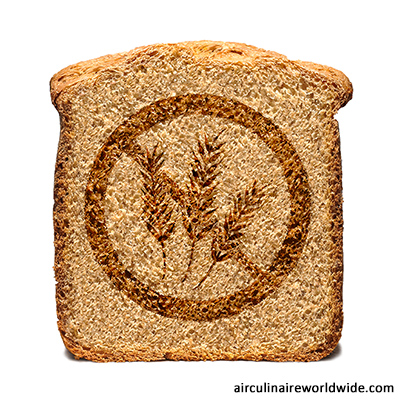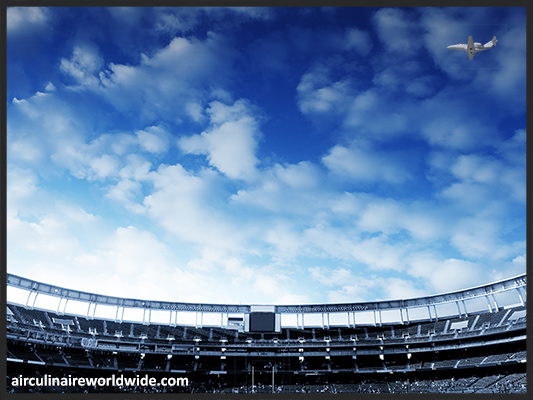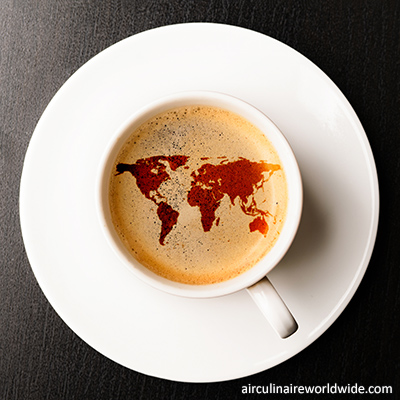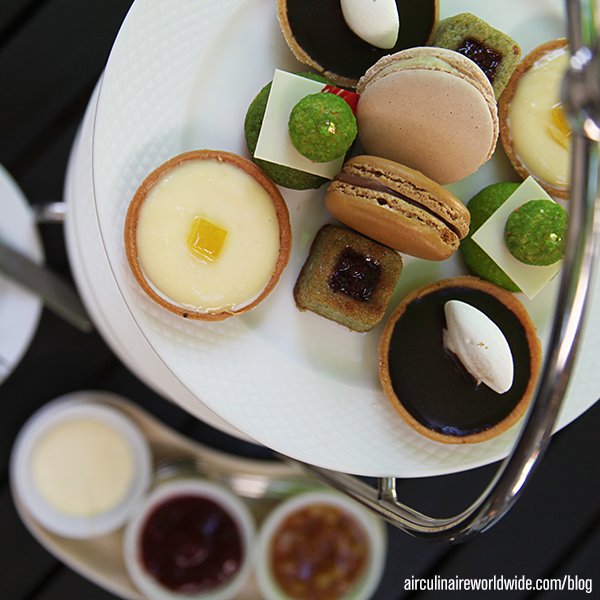Because I have dealt with many crew members in private aviation catering, I can see that one of the biggest problems crew members face is interpretation and understanding what different countries call different items. Interpretations can be necessary for things ranging from different types of food to different ways in which food can be packaged, which is why it is important that both sides understand exactly what the customer wants. The key is to ask questions and make sure that there is absolutely no confusion. And remember: The Internet is your friend! Be sure to look up terms on which you may need extra clarity.
Even though the United States and United Kingdom speak the same language, that, unfortunately, does not mean that words have the same meanings. In terms of food, the first false cognate that comes to mind is the phrase “chicken salad.” In the U.K., if someone ordered a “chicken salad sandwich,” they would receive sliced chicken breast with assorted salad greens. However, in the U.S., the term “chicken salad” means diced chicken mixed with mayonnaise, vegetables, and spices. The difference may not be huge, but as a cabin crew member, you can imagine you don’t want to have to explain to the passenger why the dish is not as expected.
There are many other examples of food items that have different names depending on whether you are in the U.S. or the U.K. A few examples include “arugula” (U.S.) and “rocket” (U.K.), “lox” (U.S.) and “smoked salmon” (U.K.), and “pepper” (U.S.) and “capsicum” (U.K.). Additionally, if you are from the U.S., and I offer you a “Bucks Fizz,” you will probably be a bit confused. However, if I offer you a “Mimosa,” you will understand me right away. Also, if you are from the U. K., and someone orders a “Waldorf Salad,” you may never have heard of it before, but it is a very well-known product in the States. The key is specificity! The more specific both the caterer and the crew can be, the less likely there will be any confusion. A quick phone call after the order has been emailed is a great way to talk through the order and make sure everything is clear.
As an in-flight caterer in the U.K., I have had countless conversations about sandwiches and how they should be prepared and delivered, to the point that I now offer both a “standard” and a “U.S.” sandwich. In the U.K. sandwiches are typically served in triangles, with all salad and condiments all in each triangle. However, many U.S. customers like their sandwiches with all salad and condiments on the side and the sandwiches cut into halves. Without careful attention to which type of sandwich is being ordered, a request for “condiments on the side” in the U.K. may result in a sandwich cut into triangles, with all salad and dressing separate. However, with communication and understanding of the different meanings of the word “sandwich,” one can understand the order is just to cut the sandwiches into halves.
Another factor which varies depending on the region in which you are operating is measurements. Measurements are key in the ordering of food to ensure the correct quantity for your flight. Someone new to in-flight catering may be unaware that there are so many different types of measurements. There are gallons, liters, cups, quarts, grams, and pounds, and that is just the start! One example is a request for “three cups of rice.” The standard measurement of a “cup” depends on in which country you are located. Again, the key with measurements is communication. A good caterer should ask about anything about which he or she is unsure.
In London it is a standard practice to determine portions based on passenger number, a simple way to guarantee the correct amount of food. For in-flight catering in London, food is provided in generous U.S. portions.However, it is sometimes the case that a customer may be used to European portions and may feed two passengers with one U.S. portion of rice. Knowledge of quantity and portion size really helps when ordering in different countries. It can lead to less waste and, most importantly – accurate invoicing!
The main factor when ordering in the U.K. if you are from the U.S. host is knowing what you want, and ordering in the best way that suits you and your passengers. An experienced in-flight caterer will always work the order system around the hostess. Another most thing to remember is that you should never feel like you are asking too many questions. Some of the most seasoned cabin crew members are specific, and it makes the caterer’s job and the crew’s needs much easier to handle. It is best never leave anything to assumption because, as you can see, every part of the order can be misinterpreted in different places around the world.
Questions?
If you have any questions about gourmet private jet catering in London, contact weborders@airculinaire.com.


